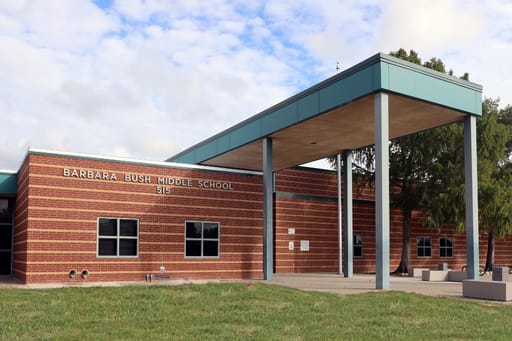Join the Activity to Save Temecula Schools: Community Action Needed!
Necessary Standards to Take Into Consideration When Evaluating Prospective Colleges for Enrollment
When thinking about colleges for registration, reviewing crucial criteria ends up being vital to making certain a favorable knowing setting. Key factors such as the alignment of scholastic programs with students' desires, the certifications of professor, and the influence of class dimensions on tailored focus are vital. Additionally, the visibility of durable sources and centers, along with a varied series of extracurricular tasks, can significantly enhance instructional experiences. The institution's culture ought to advertise respect and inclusivity to foster an encouraging community. Each of these elements plays an important duty, however exactly how do they adjoin to shape the optimal educational setting?
Academic Programs
When reviewing potential colleges for enrollment, taking into consideration the breadth and deepness of their scholastic programs is paramount. Top notch academic programs not just determine the academic worth a pupil will obtain yet also influence future chances and profession courses. Possible students and their families ought to inspect the curriculum to guarantee it lines up with the student's academic interests and occupation desires.
Certification is a critical aspect, as it indicates that the organization satisfies established criteria of top quality. In addition, the variety of course offerings, consisting of innovative placement (AP) or Global Bachelor's Degree (IB) programs, can considerably enhance a pupil's knowing experience. Colleges with robust academic tracks in STEM, liberal arts, and the arts indicate a commitment to comprehensive education.
Faculty qualifications and student-to-teacher proportions are additionally vital signs of academic excellence (Save Temecula Schools). Very credentialed teachers and smaller sized course sizes usually cause more personalized focus and a far better educational experience. The accessibility of academic resources such as collections, research laboratories, and innovation centers can additionally enrich the knowing setting.
Assessing these components guarantees that the picked institution offers a encouraging and extensive academic structure, necessary for promoting intellectual growth and preparing trainees for future success.
After-school Activities
Beyond the academic realm, after-school activities play a considerable duty in shaping an all-round instructional experience. These activities provide trainees with possibilities to establish abilities that prolong beyond the classroom, such as team effort, time, and management administration. When examining prospective schools for enrollment, it is important to take into consideration the selection and quality of extracurricular programs used.
A varied variety of tasks, including sports, arts, songs, dispute clubs, and neighborhood solution campaigns, can satisfy various passions and skills. Colleges that sustain a wide range of extracurriculars demonstrate a commitment to cultivating holistic development. Furthermore, participation in these tasks can boost university applications and resumes, showcasing a student's capacity to stabilize multiple duties.
It is likewise vital to analyze the resources and facilities available for these activities. Premium centers and experienced trainers can significantly influence the efficiency and satisfaction of the programs. Furthermore, think about the degree of pupil involvement and the college's encouragement of engagement. Schools that actively advertise extracurricular participation typically develop a lively, comprehensive neighborhood.
Class Sizes
One of the crucial variables to think about when reviewing prospective schools for registration is course size. Class size significantly affects the quality of education that a pupil receives.
Furthermore, smaller sized class sizes can add to a much more natural classroom environment. With less trainees, there is a greater opportunity for developing strong connections between instructors and peers, which can boost the learning environment and advertise a sense of community. This likewise allows for more effective class monitoring, as teachers can commit even more time to keeping a productive and positive environment.

School Society
Recognizing the value of school culture is crucial when assessing prospective institutions for registration. College culture includes the worths, beliefs, and behaviors that shape the social and learning atmosphere. A comprehensive and helpful society fosters pupil interaction, scholastic success, and personal growth. Examining an institution's culture entails observing communications among students, check out this site teachers, and team, as well as recognizing the institution's mission, worths, and expectations.
Possible parents and students ought to look for institutions that prioritize regard, partnership, and a favorable principles. Try to find indicators such as strong student-teacher relationships, energetic involvement in institution activities, and a feeling of neighborhood. A healthy college society typically promotes diversity and addition, making sure that students from varied backgrounds really feel welcomed and valued.
Additionally, a positive college society encourages open communication and gives students with a safe setting to express this page themselves. When going to a college, involve with existing students and staff to determine their contentment and feeling of belonging.
Facilities and Resources
When assessing possible schools for registration, the high quality and availability of resources and centers play an important duty fit the educational experience. A school geared up with modern features can considerably boost finding out outcomes. Class ought to be properly designed, promoting an atmosphere helpful to both concentration and creativity. Laboratories, whether for science, technology, or languages, should be properly maintained and updated to supply hands-on learning possibilities.
Collections are another keystone of scholastic excellence (Save Temecula Schools). A well-stocked library with a diverse variety of books, journals, and digital sources can support pupils' study requirements and promote a culture of reading and query.
Modern technology is essential in today's instructional landscape. Institutions ought to use trustworthy net gain access to, computer labs, and smart class to facilitate electronic learning. In addition, specialized resources such as art studios, songs rooms, and theater spaces can support innovative skills.
Ultimately, the breadth and quality of a college's resources and facilities can greatly influence a trainee's total development. Hence, moms and dads ought to very carefully evaluate these facets to ensure an all-around and improving instructional experience.
Conclusion
In recap, assessing prospective institutions for enrollment necessitates a comprehensive evaluation of a number of critical elements. Academic programs ought to straighten with pupils' scholastic interests and occupation ambitions, while faculty qualifications and appropriate course sizes are critical for customized direction. The availability of durable facilities and sources, together with a diverse series of extracurricular tasks, fosters holistic development. Additionally, an institution culture that highlights respect and inclusivity is important to producing a encouraging and effective understanding atmosphere.

A healthy and balanced institution culture commonly advertises diversity and inclusion, making sure that trainees from different histories feel invited and valued.
In addition, a positive school Continued society motivates open interaction and provides trainees with a risk-free atmosphere to express themselves.